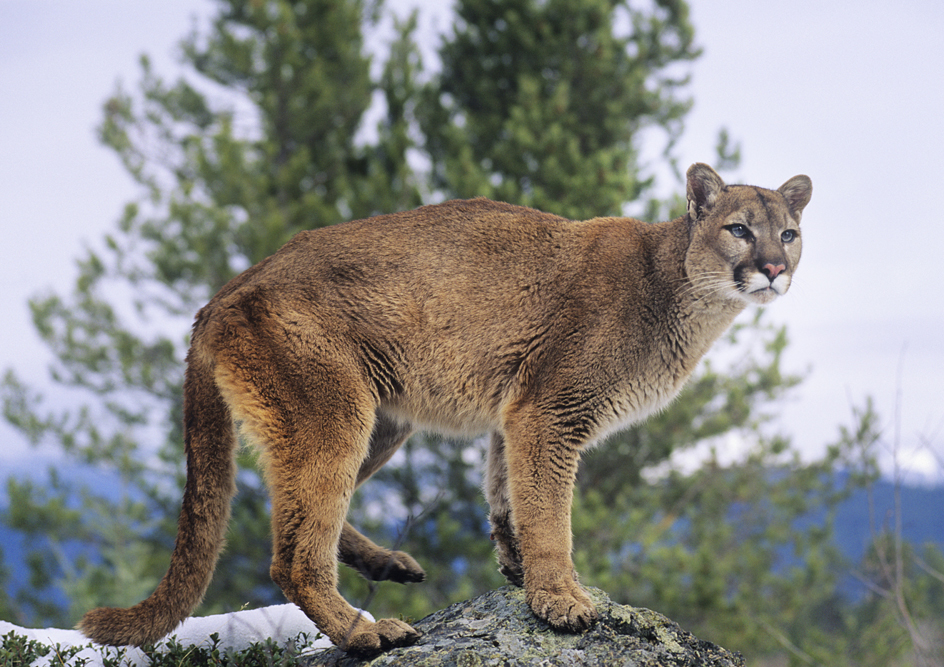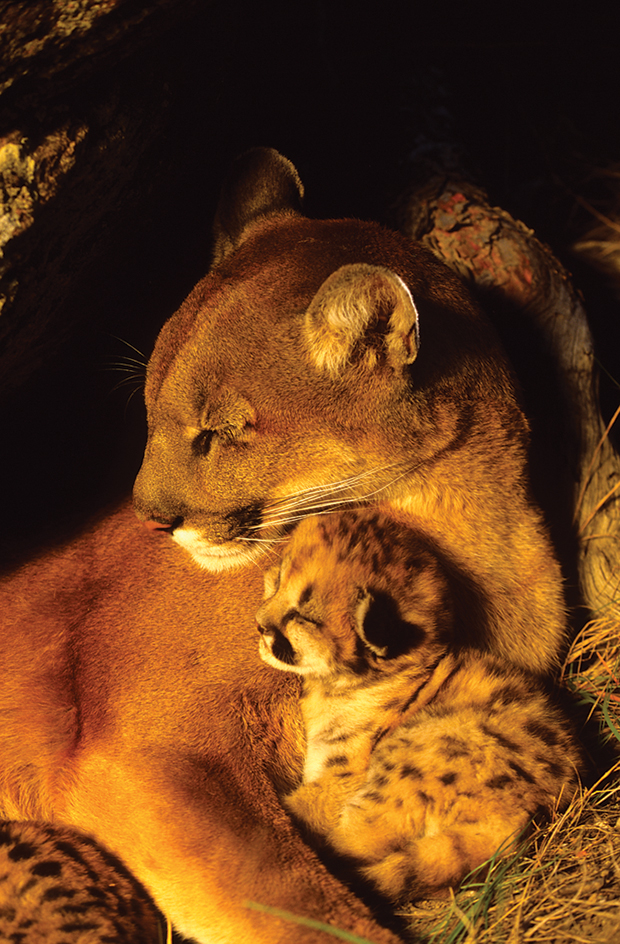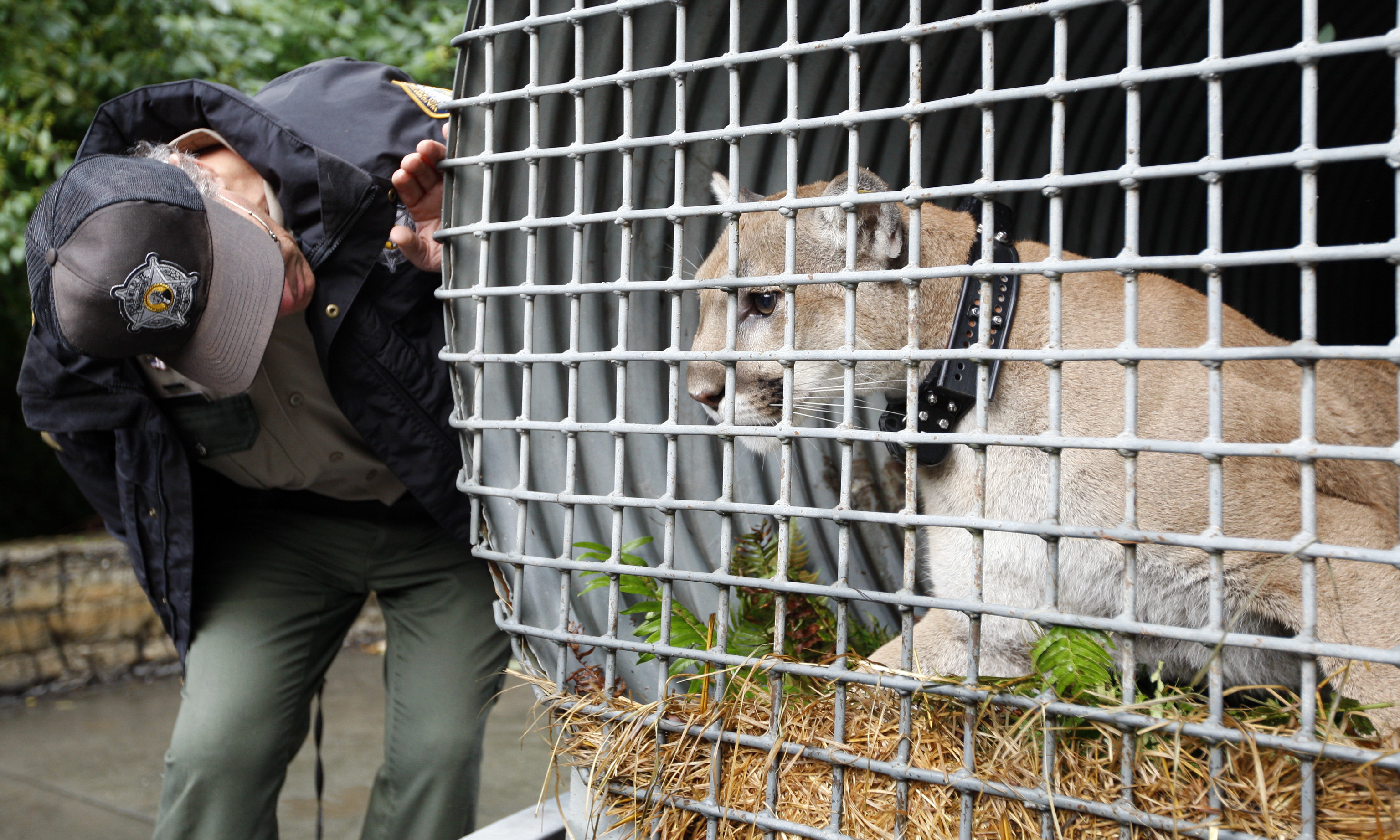Mountain lion is the second largest wild cat of the Western Hemisphere. Only the jaguar grows larger. The mountain lion lives in a wide range of habitats, including deserts, grasslands, swamps, tropical rain forests, and mountainous areas. People refer to this cat by a variety of other names. They include cougar, panther, and puma.

Mountain lions range from Canada to southern South America. Yet human beings have greatly reduced the cats’ populations, largely through overhunting and habitat destruction. Mountain lions have become rare throughout most of eastern Canada and the eastern United States.
The mountain lion has an elongated body with long legs, a small head, and small, rounded ears. Its plain-colored coat varies from silvery gray to reddish or tawny (brownish yellow). The muzzle, the area behind the ears, and the tip of the tail usually are black. The throat, the insides of the legs, and the belly typically are white. A fully grown animal may measure 5 feet (1.5 meters) long or more, not counting the tail, which grows 2 to 3 feet (60 to 90 centimeters) in length. Adult males commonly weigh 110 to 150 pounds (50 to 68 kilograms). Females weigh less. The heaviest known mountain lions have reached 220 pounds (100 kilograms) or more.
Mountain lions possess large territories that they fiercely defend. The cats generally live alone except when mating. Females seek a secluded place to give birth. They bear from one to six kittens at a time, usually two years apart. The average number is three. Newborn kittens weigh about 1 pound (0.5 kilogram). Their eyes and ears remain closed for one to two weeks after birth. Kitten fur has a lighter coloring than has the adult fur. The kittens also possess large brownish-black spots on the body. These spots fade away between 12 and 14 weeks of age, when the kittens take on adult coloration. The mother keeps her kittens with her until they can survive alone, at about 18 to 24 months of age. Mountain lions often live from 12 to 20 years.

Unlike most other large cats, mountain lions cannot roar. But they can purr as smaller cats do. The cry of the mountain lion sounds like a person screaming. The cats also can make hissing and whistlelike noises.
Loading the player...Mountain lion
A mountain lion’s hind legs grow larger than its front legs, giving the cat tremendous leaping ability. Mountain lions can leap lengths of about 40 feet (12.2 meters). They use this leaping ability to catch prey, which they hunt chiefly at night. A mountain lion keeps under cover while stalking its prey. It then leaps out upon the animal, breaking the animal’s neck or dragging it down to the ground. Deer serve as the chief prey of mountain lions in most regions. But the cats also will hunt a wide variety of other animals. These include bighorn sheep, elk, rabbits, and wild hogs.
Loading the player...Mountain lion
Ranchers regard mountain lions as pests. But the big cats seldom kill calves or other domestic animals. Biologists believe that mountain lions should be controlled but not killed off, because they play an important part in nature. Like most other large predators, mountain lions feed mainly on weak, sick, or old prey. Such animals can be burdens to their herds. By killing them, mountain lions help strengthen the herds. Mountain lions rarely attack people.

See also Florida panther; Panther.
